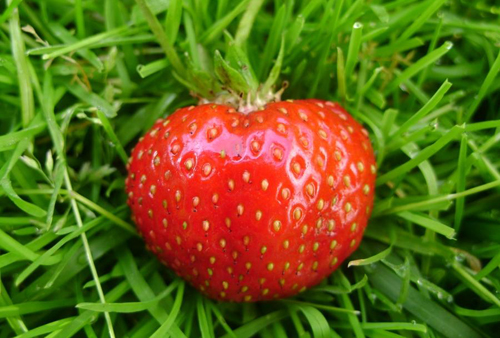Strawberry variety Zarya
Zarya is a Soviet non-repairable variety of garden strawberries (strawberries) of early ripening, universal use. It was received in 1954 at the Pavlovsk experimental station of VNIIR, the author is Yu.K. Katinskaya. For breeding, the Abundant and Premier varieties were used. The originator is the Federal Research Center All-Russian Institute of Plant Genetic Resources named after N.I. Vavilov ". In 1974, 4 years after filing an application for admission, Zarya was included in the State Register of Breeding Achievements of the Russian Federation. Zoned in nine regions of the country: North, North-West, East Siberian, Volgo-Vyatka, Siberian, Central, Middle Volga, Ural, West Siberian.
The plant is quite tall, with medium vigor, slightly spreading, compact. The leaves are large, dark green in color. The flowers are bisexual, white, collected in multi-flowered inflorescences. Peduncles are short, located at leaf level or below. The berries are medium in size, ovoid with a short neck, fairly even in the total mass. The skin is bright red with a glossy sheen. Achenes yellow, shallowly depressed. Strawberry pulp is light red, medium-dense, with a bright strawberry aroma.

The variety has good taste, the berries have a classic sweet and sour taste, reminiscent of wild strawberries. The fruits are versatile in use, equally well suited for processing and for fresh consumption. The transportability and keeping quality of berries are low due to insufficiently dense pulp, therefore Zarya is unsuitable for growing for commercial purposes, and not only for this reason, but more on that later.
The yield of our heroine is quite decent, given her "age" - from one square meter of area it is possible to collect about 2 kg of berries. Of course, in comparison with the popular high-yielding varieties, Zarya does not go, but for a summer resident, in principle, it will fit. On the other hand, even gardeners will not be particularly happy with this variety - its fruiting is very unstable, the berries become smaller by the end of the season, moreover, quite strongly. So, at the first harvest, the average weight of the fruit is about 15-20 grams, and at the latter, it can even drop below 10 grams. Nobody wants to collect such a frank trifle, no matter how tasty the strawberries are.
According to the State Register of Breeding Achievements of the Russian Federation, Zarya is not resistant to various diseases. In particular, it is susceptible to verticillary wilting and powdery mildew, and it cannot resist other diseases of a fungal nature. The winter hardiness of the variety is good, it is also undemanding to soils, it feels rather calm in hot climates, therefore it can be grown in almost all regions.
In agricultural technology, this strawberry is absolutely simple, does not require much attention and does not need painstaking care. From the nuances - do not allow the soil to dry out, this will adversely affect the yield, and also do not forget about timely preventive treatments against diseases and pests and observe crop rotation on the site.
Zarya is a rather old variety, now almost forgotten, lost in the shadow of the new strawberry market. Indeed, at the moment it can be safely called outdated, and besides, it is very problematic. It is only suitable for replenishing the collection, otherwise, in all characteristics, it loses to modern varieties. By the way, our heroine has a “descendant” called Kokinskaya Zarya. This "improved version" has more interesting qualities and has surpassed its "ancestor" in many ways.









I want to speak out in defense of the Zarya strawberry. I have been growing it in the garden for a long time. A couple of years ago we had a problem with irrigation, they did not turn on the water in our dachas on time. Strawberries just started to leave after winter, and here it is ..., and even the spring frosts hit. We thought everything would be lost! No, she survived and gave a wonderful harvest. I noticed that this variety is resistant to natural disasters, withstands cold winters, dry summers. Against diseases and pests, I use garlic and marigolds, planting them around the plantation.